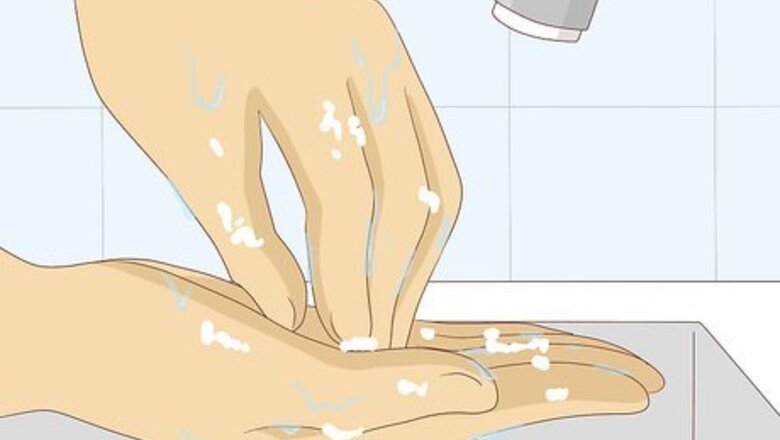
views
Wound Cleaning
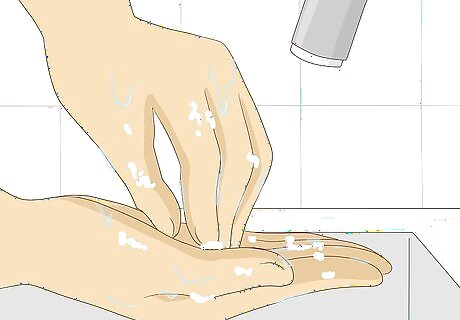
Wash your hands before caring for your wound. Bacteria builds up on your hands throughout the day, so clean them off whenever you need to touch the incision. Wet your hands and rub them together to lather your soap. Scrub between your fingers, under your nails, and the backs of your hands for at least 20 seconds to kill all of the germs. Avoid touching your wound if you aren’t able to wash your hands since you could risk getting an infection.
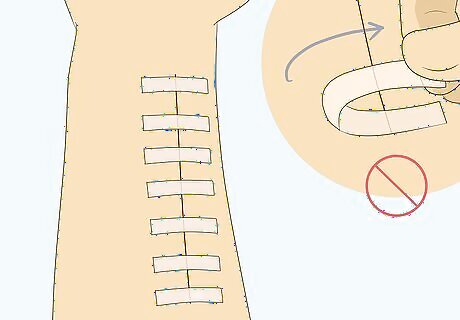
Leave medical tape on until it peels off on its own. Usually, your doctor will put medical tape over your wound to hold it closed and speed up healing. Even though it may be tempting to pick at it, leave the tape alone while you’re still recovering. After about 3–7 days, the tape will loosen and fall off so you can throw it away.
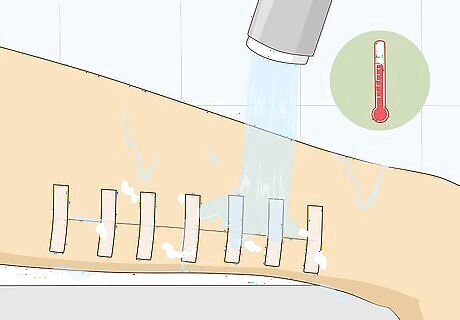
Wash the wound twice a day with soap and water. Even though your wound is closed, it could still get infected if there’s bacteria. Wet the area with warm running water to get rid of germs on the surface. Gently lather soap around your wound to kill the bacteria and clean dirt that built up. Rinse the soap off of your wound so you’re completely clean. Taking a bath softens scar tissue and makes it more likely your wound will reopen, so stick with showers or sponge baths.
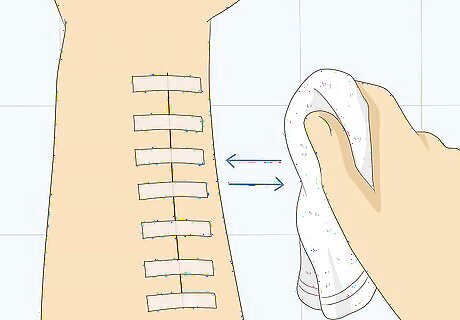
Pat the wound dry. Use a soft, clean towel so you don’t hurt yourself. Gently pat your wound rather than rubbing it back and forth. Make sure you completely dry your wound so it doesn’t get infected. Rubbing your wound dry could cause the incision to open up again.
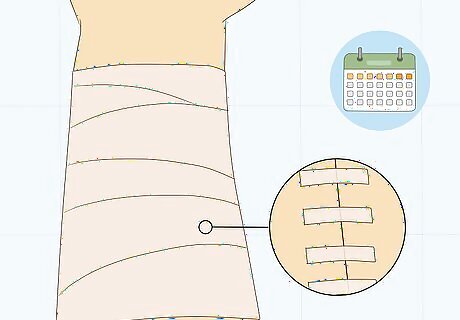
Cover your wound with a bandage for the first 5–7 days. Find a bandage that’s large enough to cover your entire wound. Wear the bandage at all times throughout the first week after you get your stitches out. That way, it’s less likely to get contaminated or infected. This is especially important if you had stitches on your knees, elbows, hands, or chin. Bandages also stop your clothes from rubbing against your wound and prevent irritation. Apply an ointment or petroleum jelly to the scar before you apply a bandage to help speed up healing.
Scar Prevention
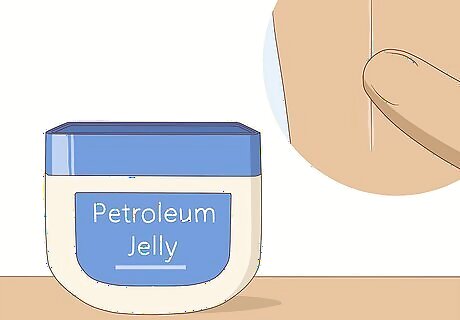
Apply petroleum jelly to your wound to keep it moist. After you clean your wound for the day, take a fingertip-sized amount of petroleum jelly and gently rub it into the area. Work the petroleum jelly in until it’s clear and forms a thin layer over your wound so it doesn’t dry out. Protect your wound with a bandage so it doesn’t reopen or get irritated. The petroleum jelly prevents a scab from forming, which could make your healing time even longer.
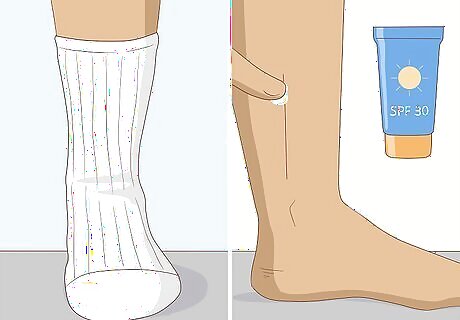
Cover the area or use sunblock when you go outside. If you can, hide your scar under your clothes. Put on long sleeves or wear pants depending on your scar’s location. You could also use a bandage if you want it completely covered. If you aren’t able to easily cover your scar with clothes or a bandage, then put on sunblock that contains zinc and has at least 30 SPF or higher. If you don’t use protection from the sun, then your scar might have red or brown discoloration. If your wound is on your head or face, you might be able to cover it with a large sun hat. Covering your scar from the sun minimizes permanent skin discoloration around your scar.
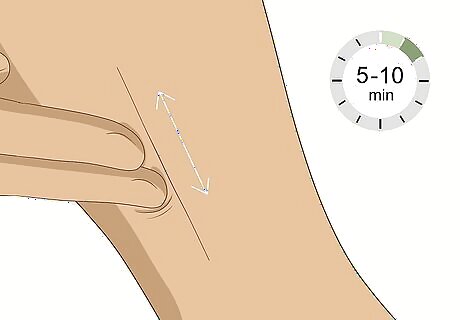
Massage your wound twice a day to reduce scar tissue. Only massage your scar if it’s closed and doesn’t have any signs of infection, or else you could reinjure yourself. Gently apply pressure on your scar and massage along the length of your injury. Massage your scar for 5–10 minutes twice every day. Only press down until you feel slight pressure. If you feel any pain, ease up so you don’t hurt yourself. After about a month, you can start massaging your scar from all directions.
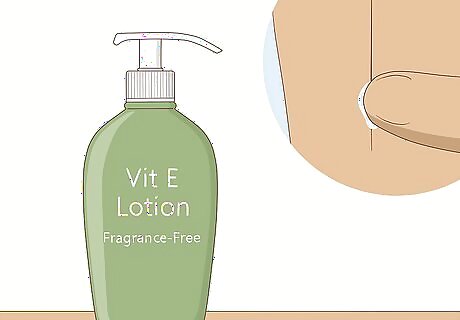
Try vitamin E cream to help moisturize your skin. Vitamin E oil might help add extra moisture to your skin and help soften your scar so it’s not as prominent. Look for a fragrance-free lotion that already has vitamin E to use and apply to your scar daily. There haven’t been many studies on vitamin E for scar prevention, so you may not notice any improvement from it. Stop using vitamin E if it causes itching or a rash.
Pain Management
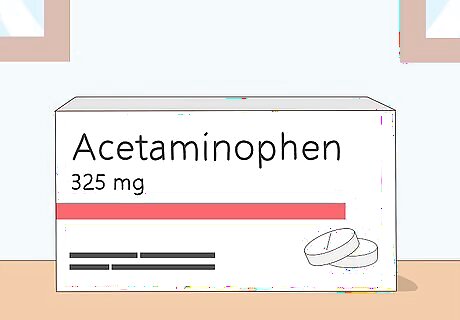
Take acetaminophen if you feel any discomfort. Take a single dose of acetaminophen, which is about 325 mg, whenever you’re feeling aches or pains from your wound. If you still don’t feel relief after 4 hours, you can take another dose. Continually using acetaminophen can damage your liver. Avoid taking ibuprofen or naproxen since it could increase bleeding. Follow the dosage instructions on the box so you don’t exceed the maximum daily intake.

Hold an ice pack on your wound to bring down pain and swelling. If you don’t have any over-the-counter medicine, try filling a bag with ice and wrapping it in a towel. Hold the bag against your wound so the cold relieves your pain. You can keep the ice pack on your skin for up to 15–20 minutes every hour. Avoid putting ice directly on your skin or keeping it there longer than 20 minutes since it could damage your skin.
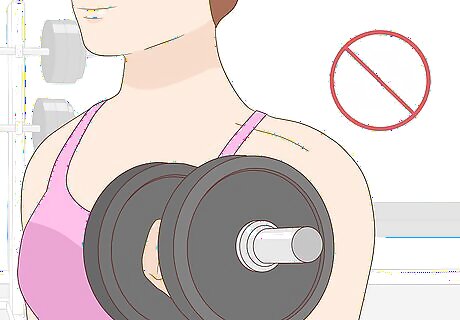
Stick with gentle activities for the first month to avoid irritation or reinjury. Strenuous activities that stress your wound can cause pain or make it split open, so avoid activities like sports, weight lifting, or swimming. Instead, just rest and stick to some low-intensity exercise, such as walking. Talk to your doctor to see what activities you can do safely while you’re recovering. Your wound will feel tender as well, so be careful not to bump or hit it against anything. Even though yoga and stretching might be low-intensity, it can also pull at your wound and cause it to split open.
When to See a Doctor
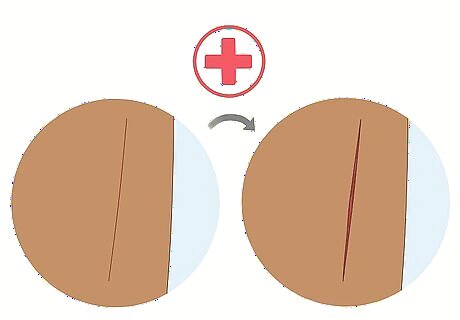
Go to an emergency room if the wound splits or has sudden numbness. When your wound opens up again, it’s really prone to infections and your doctor might give you stitches again. If the wound continues bleeding for more than a few minutes, reach out to your doctor. Numbness, increased pain, swelling, redness, and discharge from your scar can also be signs that you have an infection, so head to your doctor’s office as soon as possible. You can clean up blood around your wound right away with a clean bandage or piece of gauze.
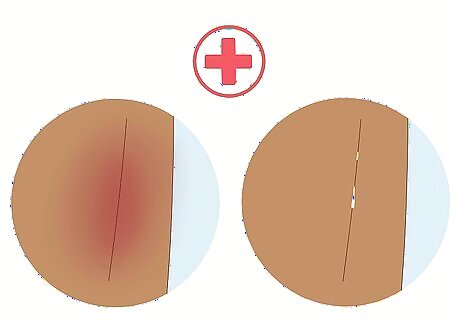
Ask your doctor about infections if there’s redness, pus, or tenderness. It’s normal for your wound to have slight redness while it’s healing, but watch out for if it’s spreading. If you notice redness extends ⁄2 in (1.3 cm) out from the wound, call your doctor since it could be a sign that you developed an infection. Check the incision for any pus and tenderness when you touch it since these could be other indicators. Your doctor will usually recommend antibiotic ointment that might not even require a prescription.
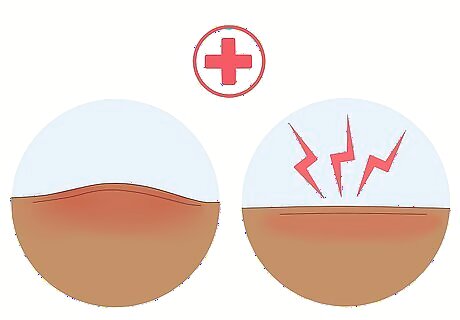
Call your doctor about your scar if it’s hard, painful, or restricts movement. Some scars can heal improperly and make it hard to function. If you notice your scar has a hard texture, looks raised, feels painful to the touch, or prevents you from moving properly, you might need to have it checked out by your doctor.




















Comments
0 comment